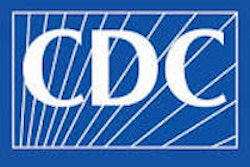Wednesday, November 30 | 11:50 a.m.-12:00 p.m. | SSK02-09 | Room E451A
In this Wednesday session, researchers from Memorial Sloan Kettering Cancer Center will share research that indicates the clinical value of whole-breast ultrasound (WBUS) is reduced in women undergoing digital breast tomosynthesis rather than regular digital mammography.A team led by Dr. Janice Sung analyzed 560 women scheduled for both screening digital breast tomosynthesis (which included 2D mammography images) and WBUS between July 2014 and March 2016. Both exams were performed at the same visit and interpreted by two radiologists blinded to the other modality. Sung's group recorded the cancer detection and positive predictive value of biopsy (PPV3) rates, as well as the women's risk factors, personal breast cancer history, and BRCA status.
Of the women included in the study, 74% had dense breast tissue, 33% had no additional risk factors, 23% had a previous history of breast cancer, and 17% had a family history of the disease in a first-degree relative.
Three cancers were identified, for a detection rate of five per 1,000 women. Two of these cancers were invasive ductal carcinoma, while one was ductal carcinoma in situ (DCIS). The two invasive ductal carcinomas were identified on 2D mammography images, digital breast tomosynthesis, and WBUS; the one DCIS was found only on tomosynthesis and WBUS.
The PPV3 was 19% for tomosynthesis and 27% for WBUS, and adding tomosynthesis views reduced the number of recalls from 2D mammography by 15%, the researchers found. Although both tomosynthesis and WBUS increased the cancer detection rate compared with 2D mammography alone, because no additional cancers were found on WBUS, its clinical value is reduced in women undergoing tomosynthesis, they concluded.



















